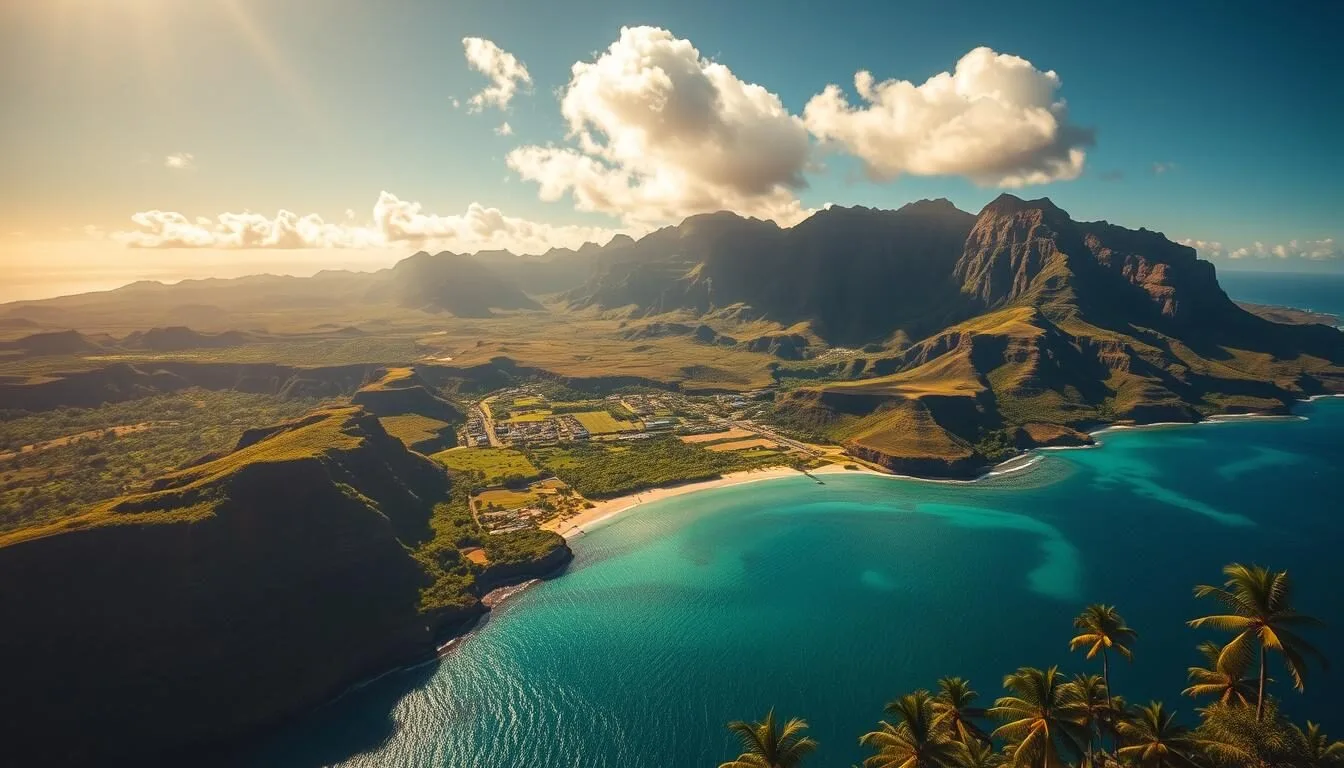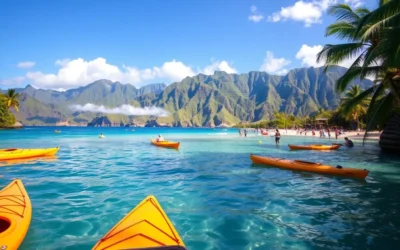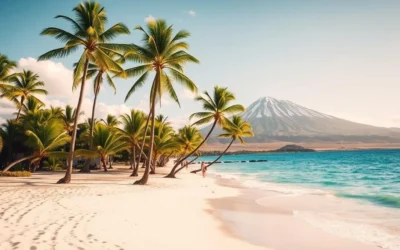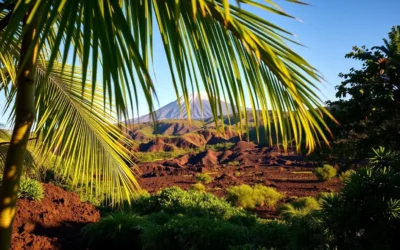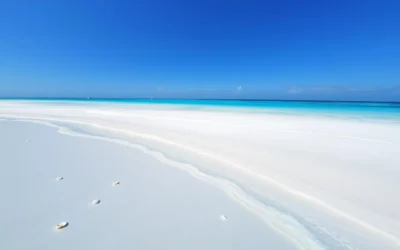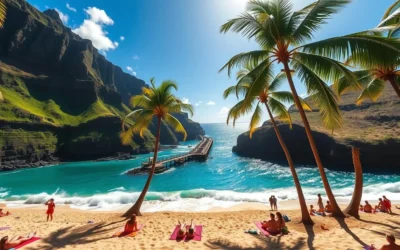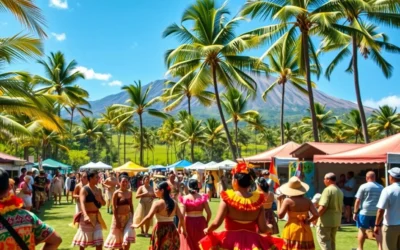Imagine yourself on the lush, emerald shores of the “Garden Isle,” surrounded by dramatic coastlines and a tropical paradise. Kauai is a nature lover’s dream, but its weather can be unpredictable. You might be wondering, what’s the best time to visit this Hawaiian gem without the rain dampening your vacation?
Unlike other Hawaiian islands, Kauai’s weather patterns and seasonal ocean conditions present unique challenges. The right time to visit can make all the difference in enjoying outdoor activities and taking in the island’s breathtaking landscapes. In this article, we’ll explore the months that offer the perfect balance of good weather, smaller crowds, and budget-friendly options, helping you plan your ideal trip.
Understanding Kauai’s Unique Climate
Kauai, known as the Garden Isle, boasts a unique climate that varies significantly across the island. This variability is due to its lush landscapes and diverse geography, creating different weather patterns across the island.
The Garden Isle’s Weather Patterns
Kauai’s weather is characterized by its tropical climate, with significant rainfall throughout the year, especially during the winter months (November-April). The island’s geography plays a crucial role in its weather patterns, with the mountains creating a rain shadow effect that results in varied conditions across different regions.
North Shore vs. South Shore Weather Differences
The North Shore of Kauai, including areas like Princeville and Hanalei, typically receives more rainfall than the South Shore, making it lush and green. In contrast, the South Shore, with areas like Poipu and Koloa, tends to be sunnier and drier year-round, making it ideal for beachgoers. When planning your time visit to Kauai, understanding these differences can help you choose accommodations and activities that suit your preferences.
- The North Shore experiences more rain during the winter, creating challenging vacation conditions but also lush landscapes.
- The South Shore is generally drier and sunnier, making it a reliable choice for consistent beach weather.
- The regional differences in weather conditions significantly impact accommodation choices and activity planning.
- Visitors can adapt to the weather by changing locations, thanks to the island’s small size, which allows for a drive around the island in just an hour.
During the summer months, both shores offer pleasant weather, but the South Shore remains a popular choice for those seeking sunny beaches and dry conditions.
The Best Months to Visit Kauai for Perfect Weather
Understanding Kauai’s seasonal weather patterns is key to planning a trip that meets your expectations. The island’s climate varies significantly between summer and winter, each offering unique experiences.
Summer Season: May through October
The summer season on Kauai, spanning from May to October, is characterized by warm temperatures and relatively dry conditions, making it an ideal time for beachgoers and outdoor enthusiasts. During these months, the weather is typically sunny, with average highs in the mid-80s, creating perfect conditions for swimming, snorkeling, and exploring the island’s natural beauty.
Calm seas and clear waters make summer an excellent time for water activities on both the North and South Shores. It’s also a great period for hiking and visiting Kauai’s lush interior, as the dry weather makes trails more accessible.
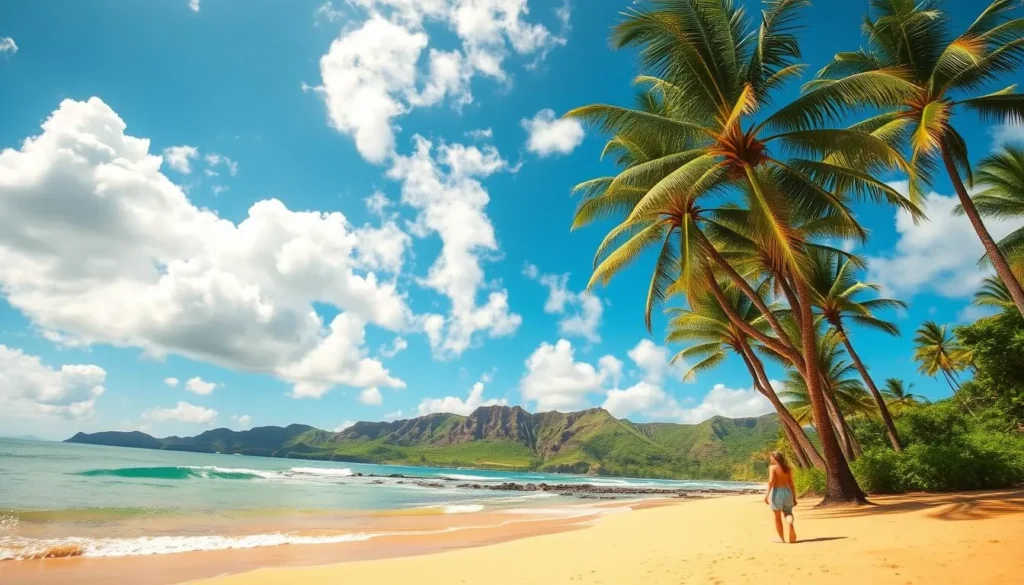
Winter Season: November through April
Winter on Kauai brings a different atmosphere, with slightly cooler temperatures and increased rainfall, particularly on the North Shore. While this might deter some, it’s a season that offers its own unique charms. The rain enhances the island’s lush vegetation, making it a great time for nature lovers and photographers.
The North Shore becomes a hotspot for surfers, as the winter months bring impressive waves. However, the rough seas can make swimming and snorkeling challenging at times. In contrast, the South Shore remains relatively dry, making it an excellent base for winter visitors.
| Season | Weather | Activities |
|---|---|---|
| Summer (May-Oct) | Warm, dry, sunny | Beach activities, hiking, snorkeling |
| Winter (Nov-Apr) | Cooler, rainier, rough seas | Surfing, photography, whale watching |
Avoiding the Crowds: When to Experience a Quieter Kauai
If you’re looking for a serene Kauai experience, consider visiting during the quieter months. The island’s natural beauty is more accessible when you’re not surrounded by large crowds.
Low Season Sweet Spots
The best time to visit Kauai for a balance between good weather and fewer crowds is during the months of May, late August, September, and early October. These periods are considered the “low season sweet spots” because they offer pleasant temperatures and reduced rainfall, making them ideal for outdoor activities. You can enjoy the island’s beautiful beaches and trails without the peak season crowds.
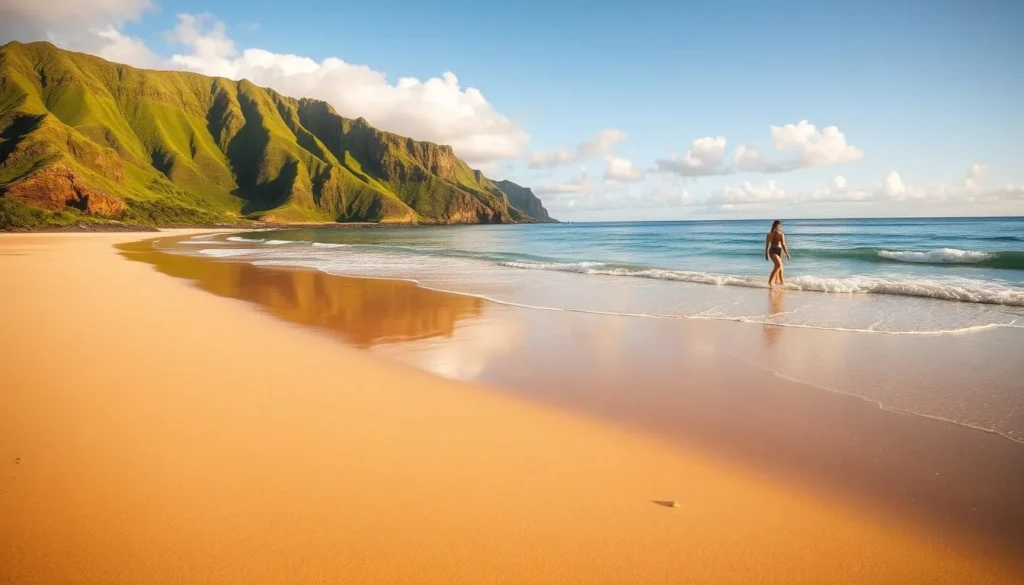
Balancing Solitude with Good Weather
To experience Kauai with minimal crowds, consider visiting popular attractions early in the morning or later in the afternoon. You can also explore less-visited areas of the island, such as the north shore during the summer months, when the weather is calm and sunny. Additionally, traveling on weekdays instead of weekends can make a significant difference in avoiding crowds at popular destinations. Some of the island’s most beautiful and peaceful spots, like the Na Pali Coast, remain less crowded year-round, offering a serene experience regardless of when you visit.
Budget-Friendly Times to Visit Kauai
The key to an affordable Kauai vacation lies in understanding the island’s seasonal pricing trends. By timing your trip correctly, you can enjoy the island’s beauty without breaking the bank.
When Hotel Rates Drop
Hotel rates in Kauai tend to drop during the shoulder season, which includes September and October. During these months, hotels and vacation rentals offer their lowest rates, making it an ideal time for budget-conscious travelers. You can save significantly on accommodations by planning your trip during this period.
Best Time to Book: September and October are considered off-peak months for tourism in Kauai, resulting in lower hotel rates.
| Month | Average Hotel Rate |
|---|---|
| September | $200/night |
| October | $220/night |
| Peak Season (December) | $350/night |
Finding the Best Deals on Flights and Car Rentals
To save on flights and car rentals, consider traveling during the shoulder season. Airfares drop in September, and you can find good deals on car rentals during the same period. Booking in advance and being flexible with your travel dates can also help you secure better rates.
Tips for Saving:
- Book flights 2-3 months in advance to get the best deals.
- Consider off-airport car rental locations for lower rates.
- Use fare alerts to notify you of price drops.
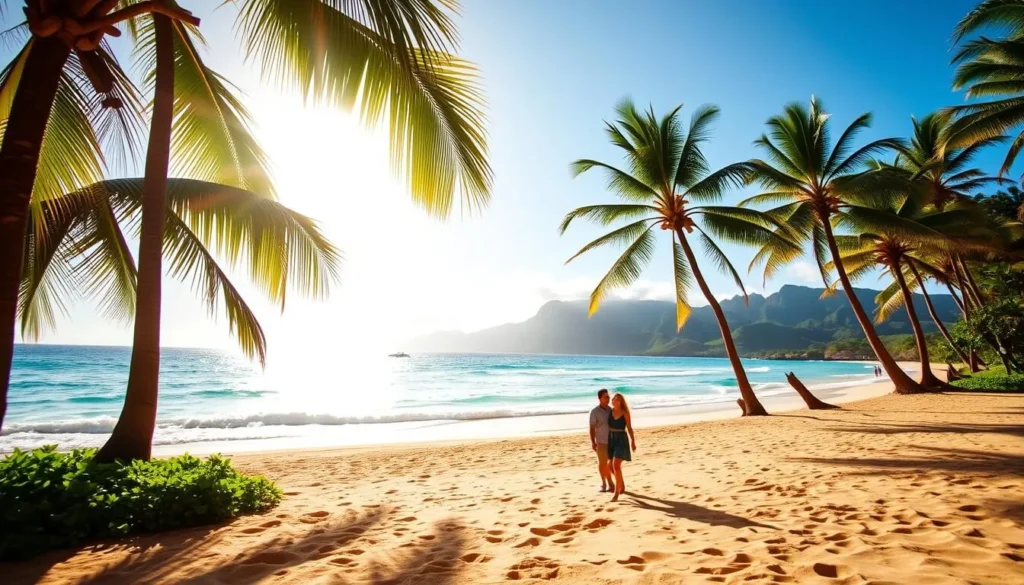
By understanding the seasonal patterns and being flexible with your travel plans, you can have a budget-friendly trip to Kauai. Whether you’re looking to save on accommodations, flights, or car rentals, timing your visit correctly can make a significant difference in your overall expenses.
Kauai’s Best Months for a Weather-Savvy Trip
The best months to visit Kauai are those that strike a balance between favorable weather and fewer crowds. For travelers, this means enjoying the island’s beautiful beaches, engaging in various activities, and experiencing the local culture without the peak season chaos.
The Golden Months: May, August, September, and October
These months are considered the “golden months” for visiting Kauai. May brings the tail end of the spring season, with pleasant weather and fewer tourists than the peak summer months. August and September offer warm weather, ideal for water activities, while October marks the beginning of the transition to the wetter winter season, but still enjoys relatively dry conditions.
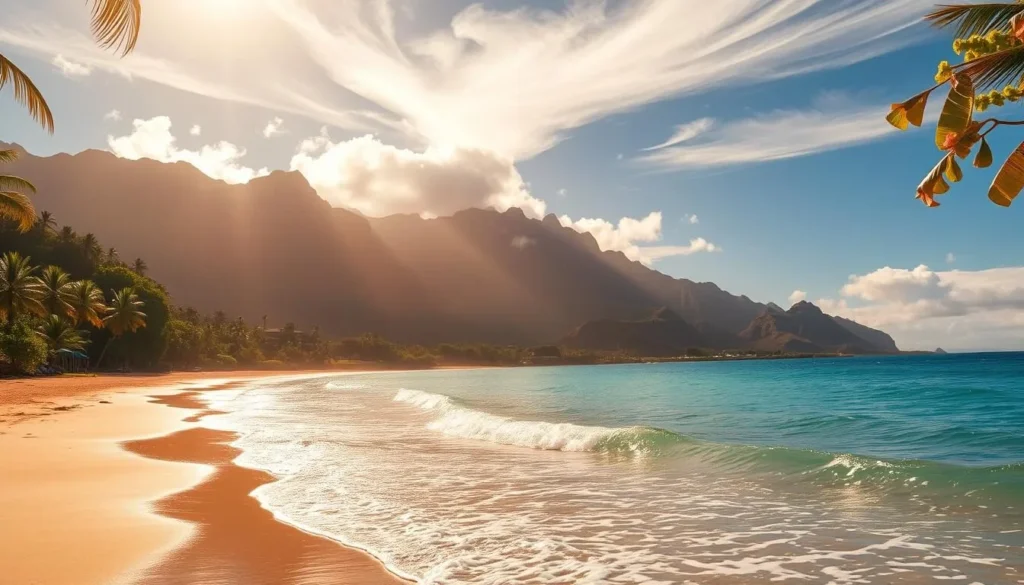
During these months, visitors can enjoy a range of activities, from snorkeling and surfing to hiking and sightseeing. The weather is generally calm and sunny, making it perfect for exploring the island’s natural beauty.
Why These Months Offer the Perfect Balance
The “golden months” represent the perfect intersection of Kauai’s two main seasons, offering the reliability of summer weather without the peak crowds and prices. Here are a few reasons why these months are ideal:
- The weather is generally pleasant, with warm temperatures and minimal rainfall, making it ideal for outdoor activities.
- The crowds are smaller compared to the peak summer months, allowing for a more relaxed atmosphere on the beaches and at popular attractions.
- Prices for accommodations and car rentals tend to be lower, providing better value for your trip.
- Visitors can enjoy a wide range of activities, from water sports to hiking and cultural events, without the limitations often experienced during peak or off-seasons.
By visiting Kauai during these “golden months,” you can experience the “real Kauai” with fewer limitations, enjoying the island’s natural beauty, culture, and activities in a more relaxed and cost-effective manner.
Month-by-Month Weather Guide to Kauai
A month-by-month breakdown of Kauai’s weather reveals the best times to visit and enjoy various activities on the island. Understanding the seasonal variations will help you plan a more enjoyable and stress-free trip.
January to March: Winter Conditions
From January to March, Kauai experiences its winter season, characterized by cooler temperatures and increased rainfall. Average temperatures range from 78°F to 68°F. While it’s the wettest period, the rain showers are often brief, and the island remains lush and green.
The North Shore is particularly prone to larger surf during these months, making it a popular time for surfers. However, some beaches and attractions may be less accessible due to weather conditions. If you’re planning to visit during this time, consider accommodations on the South Shore, which tend to be drier.
April to June: Spring Transition
As spring arrives, Kauai transitions into a more pleasant climate. April to June brings warmer temperatures, with averages ranging from 80°F to 70°F, and a decrease in rainfall. This period is ideal for outdoor activities like hiking and exploring the island’s natural beauty.
The ocean conditions become calmer, making it an excellent time for snorkeling and swimming. With the improving weather, visitor numbers start to increase, but it’s still considered a shoulder season, offering a good balance between pleasant conditions and manageable crowds.
July to September: Summer Peak
Summer is the peak tourist season on Kauai, with July to September being the warmest months. Temperatures often reach the mid-80s, and the weather is generally dry and sunny. It’s an ideal time for beachgoers and those enjoying water activities.
However, this is also the busiest period, with higher prices for accommodations and larger crowds at popular attractions. If you’re looking for a vibrant atmosphere and don’t mind the crowds, summer is a great time to experience Kauai’s events and festivals.
October to December: Fall into Winter
October marks the beginning of Kauai’s transitional fall period, gradually shifting from summer to winter patterns. The average temperature in October is 83°F (high) and 73°F (low), making it an excellent time to visit, with warm weather and lower prices.
As the months progress, November sees increased rainfall, particularly on the North Shore, and December marks the onset of winter conditions, with more consistent rainfall and temperatures in the upper 70s to lower 80s. The North Shore begins to experience larger surf, and while hurricane season technically continues through November, the threat diminishes as the season progresses.
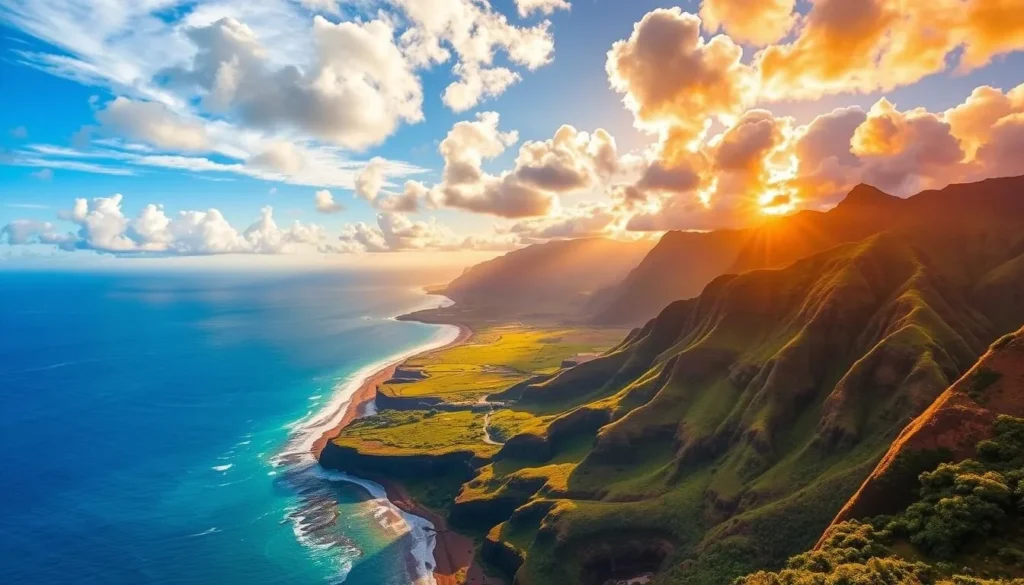
Visitor patterns during this period vary, with October offering excellent value with summer-like conditions, November being a pre-holiday quiet period, and December being peak holiday season with premium pricing. As winter approaches, it’s recommended to shift accommodations from the North Shore to the South Shore for drier conditions.
Rainfall Patterns Across Kauai
Kauai’s unique geography results in distinct rainfall patterns across different parts of the island. Understanding these patterns is essential for planning a successful trip to this beautiful Hawaiian destination.
Understanding the Island’s Microclimate Zones
Kauai is characterized by diverse microclimates, significantly influencing its rainfall. The island’s lush landscapes are a result of the varied rainfall patterns, with some areas receiving significantly more rain than others. For instance, the south side of the island, such as Poipu, tends to be drier, making it a preferable location for accommodations if you want to minimize your exposure to rain.
| Region | Average Rainfall | Best Time to Visit |
|---|---|---|
| North Shore | Higher | Summer months |
| South Shore (Poipu) | Lower | Year-round, but drier in summer |
Preparing for Rain Without Ruining Your Trip
To make the most of your trip, it’s crucial to be prepared for Kauai’s rainfall. Packing lightweight rain jackets, quick-dry clothing, and appropriate footwear for potentially muddy conditions can make a significant difference. Having a flexible itinerary that includes backup indoor activities can also help you adapt to changing weather conditions.
Some of Kauai’s most beautiful features, such as lush landscapes and waterfalls, are actually enhanced by rainfall. Rain showers are often brief and localized, allowing you to wait them out or drive to sunnier areas. On rainy days, consider visiting museums, shopping centers, or indulging in spa treatments.
Hurricane Season Considerations
For travelers heading to Kauai, being informed about hurricane season can make a significant difference in their trip experience. While the island is generally prepared for such events, visitors can benefit from understanding the risks and planning accordingly.
When is Hurricane Season in Kauai?
Hurricane season in Kauai typically runs from June 1 to November 30. During this period, the islands are at a higher risk of being affected by tropical cyclones. It’s essential to monitor weather forecasts and warnings issued by reliable sources like the Central Pacific Hurricane Center.
| Month | Hurricane Risk Level | Precautions |
|---|---|---|
| June | Low-Moderate | Monitor weather forecasts |
| July-September | Moderate-High | Purchase travel insurance |
| October-November | Moderate | Stay informed about weather conditions |
How to Plan Around Potential Storms
Planning a trip during hurricane season requires flexibility and preparedness. Consider purchasing travel insurance that covers weather-related disruptions. Stay updated with the latest weather forecasts, and have a backup plan in case your activities are canceled due to a hurricane warning.
Key Tips:
- Monitor tropical weather systems before and during your trip.
- Understand hotel protocols for hurricane threats.
- Create a flexible itinerary that can adapt to weather conditions.
Best Times to Visit Kauai’s North Shore

The North Shore of Kauai is known for its dramatic seasonal changes, from serene summer days to the powerful waves of winter. This variability makes it a unique destination that can cater to different preferences and activities depending on the time of year you visit.
Summer Months: Calm Waters and Sunny Skies
During the summer months, Kauai’s North Shore transforms into a tranquil paradise. The calm waters and sunny skies make it an ideal time for swimming, snorkeling, and other water activities. The beaches, such as Hanalei Bay, are perfect for families and those looking to enjoy the sun and sea in a more serene environment. Summer is also a great time to explore the lush landscapes and enjoy outdoor activities like hiking and biking.
Summer highlights include: calm and clear waters, ideal for swimming and snorkeling; sunny skies with minimal rainfall; and lush landscapes perfect for hiking and exploring.
Winter Challenges: Big Waves and Rainfall
Winter brings a different story to Kauai’s North Shore, with big waves and increased rainfall. While the powerful surf attracts professional surfers, it makes most beaches unsafe for average visitors. The rain can lead to flash floods and occasional road closures, particularly on the highway past Hanalei. However, winter also has its unique attractions, such as dramatic wave watching, lush landscapes due to the rain, and powerful waterfall displays.
Visitors should be aware of: powerful waves that are not suitable for average swimmers; potential flash floods and road closures; and the need to plan for alternative activities or day trips to other parts of the island.
Best Times to Visit Kauai’s South Shore
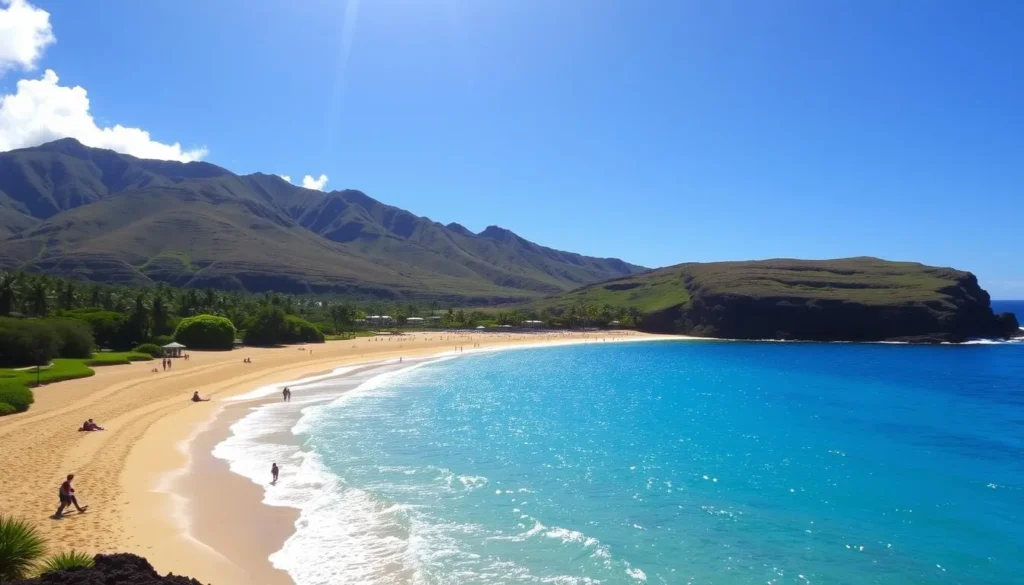
With its reliably sunny weather and protected beaches, Poipu on Kauai’s South Shore is a top destination for families and beach lovers alike. The area’s unique microclimate ensures that it remains sunny and dry even during the winter months when other parts of the island experience significant rainfall.
Winter Advantages: Drier Conditions
Visiting Kauai’s South Shore during the winter months offers several advantages. The region experiences drier conditions compared to the North Shore, making it an ideal escape from rain and big waves. Additionally, winter is the peak season for whale watching, with humpback whales migrating to the waters around Kauai.
The calm and clear waters of Poipu Beach provide perfect conditions for snorkeling and swimming, making it an excellent time for families to enjoy water activities.
Year-Round Appeal of Poipu
Poipu’s consistent appeal throughout the year can be attributed to its protected beaches, which offer safe swimming conditions year-round. The area is also rich in accommodations, dining options, and activities, catering to a wide range of interests and preferences.
Whether you’re looking to explore the island, enjoy beach activities, or simply relax, Poipu serves as an excellent base. Its proximity to major attractions and the variety of experiences available make it an ideal location for visitors.
Optimal Timing for Kauai’s Popular Activities
To make the most of your trip to Kauai, understanding the optimal timing for popular activities is key. The island offers a range of experiences, from snorkeling and hiking to surfing and boat tours, each with its best time to visit.
Snorkeling and Swimming: When Waters Are Calmest
The best time for snorkeling and swimming in Kauai is during the summer months (May through October) when the waters are generally calmest. Poipu Beach and Lydgate Beach are popular spots that offer excellent conditions during this period.
Hiking Season: When Trails Are Most Accessible
For hiking enthusiasts, the best time to explore Kauai’s trails is during the drier months, typically from April to October. The Kalalau Trail along the Napali Coast is a challenging hike that’s best attempted during this period due to more favorable weather conditions.
Surfing: Best Times for Different Skill Levels
Surfing in Kauai can be enjoyed year-round, but the best times vary based on skill level. Beginners may prefer the calmer summer months, while experienced surfers often seek the bigger waves of winter (November through March). Hanalei Bay is a versatile spot that caters to both beginners and experts.
Napali Coast Boat Tours and Helicopter Rides
The Napali Coast is one of Kauai’s most breathtaking areas, and experiencing it via boat tour or helicopter ride is a must. The summer months (May through October) offer the most reliable conditions for these activities due to calmer seas and clearer skies. For a Napali Coast snorkeling tour or sunset cruise, summer provides the best experience. However, it’s also worth considering the shoulder season (May-June and September-October) for fewer crowds and potentially better deals.
Special Events and Festivals by Season
Kauai, known as the Garden Isle, hosts a variety of special events and festivals throughout the year that showcase its rich culture and natural beauty. These events offer visitors a unique perspective on the island’s heritage and traditions.
Cultural Celebrations Worth Planning Around
Kauai’s cultural celebrations are a highlight of the year. The Prince Kuhio Celebration in March honors the prince’s legacy, while the King Kamehameha Day in June is a statewide celebration. Visitors can experience the island’s rich cultural heritage through music, dance, and local cuisine at these events.
Seasonal Highlights Throughout the Year
Each season brings its own unique events to Kauai. In winter, enjoy whale watching and the Waimea Town Celebration. Spring brings the Kauai Marathon and mango season. Summer is perfect for outdoor activities, while fall features the Kauai Mokihana Festival and Coconut Festival Planning your visit around these events can enhance your island experience, offering a deeper connection to the local culture and natural environment.
The Worst Times to Visit Kauai (And Why They Might Still Work for You)
Understanding the worst times to visit Kauai can help you prepare for a more enjoyable trip. While the island is a year-round destination, certain periods may present challenges due to weather or crowds.
Weighing the Pros and Cons of Peak Season
Visiting Kauai during peak season, typically summer, means dealing with larger crowds and higher prices. However, the weather is usually sunny and warm, making it ideal for beach activities and outdoor adventures. If you’re looking for a vibrant atmosphere and don’t mind the crowds, peak season might still be a good time for you to visit.
Making the Most of a Rainy Season Visit
The rainy season, from November to April, brings increased rainfall, particularly to the North Shore. Yet, this period also has its advantages. The island becomes lush and green, waterfalls are at their peak, and you can enjoy lower prices and fewer tourists outside of holiday periods. By basing yourself on the South Shore, being flexible with your plans, and embracing indoor activities, you can have a rewarding vacation even during the rainy season.
Some of Kauai’s most spectacular natural features are actually enhanced by rainy conditions. Waimea Canyon and the North Shore landscapes become even more breathtaking. You can enjoy rainy day activities like visiting museums, shopping in Hanapepe or Kapaa, or simply waiting out short showers to continue your outdoor plans.
Conclusion: Planning Your Weather-Perfect Kauai Vacation
The best time to visit Kauai depends on what you’re looking for in a Hawaiian vacation. For most travelers, the months of May, August, September, and October offer the optimal balance of pleasant weather, manageable crowds, and value for money. These golden months provide a sweet spot for enjoying the island’s outdoor activities, cultural events, and natural beauty.
However, it’s essential to remember that there’s no truly “bad” time to visit Kauai. Each season brings its unique charm and experiences. Summer is ideal for families with dry and sunny weather, while winter, despite being the wettest season, offers the spectacle of big waves and whale watching opportunities. For those on a budget, the shoulder seasons can provide significant savings on accommodations and flights.
When planning your trip, consider your priorities: whether it’s weather, budget, or specific activities like snorkeling, hiking, or surfing. For outdoor enthusiasts, late spring and early fall are particularly appealing due to the comfortable temperatures and fewer crowds. If solitude is what you’re after, consider visiting in the fall when the island is less crowded.
Ultimately, the best time to visit Kauai is when you can make the time to get there. With its year-round beauty and aloha spirit, Kauai promises an unforgettable experience regardless of the season. So, pack your bags, and get ready to immerse yourself in the island’s natural splendor and warm hospitality.
By being flexible and having realistic expectations, you can have a wonderful time on the island, enjoying its beautiful beaches and outdoor activities. Whether you’re looking for a relaxing getaway or an action-packed adventure, Kauai has something for everyone.
